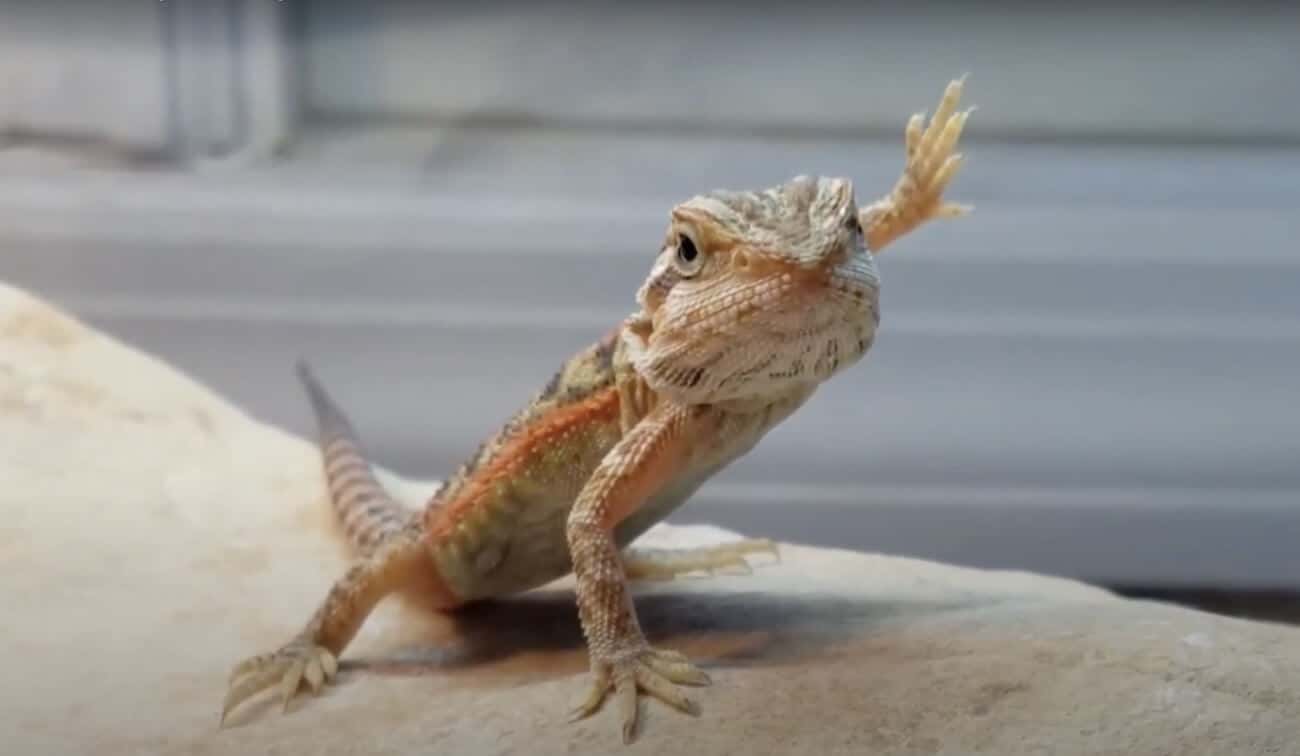Waving the arms is considered one adorable and quirky trait that any bearded pet dragon can show. It is one kind of communication and constantly indicates acknowledgment or submission to the presence of any other being, whether it is the keeper or any other living creature. But sometimes, that can be a symbol of stress. So how can any keeper be able to understand What does it mean when bearded dragons wave?
Why does a bearded dragon bob its head and wave?
Any bearded dragon waves generally indicate that it recognizes the presence of any other living creature. This can be a symbol of submission.
Head bobbing can indicate different things. The slower head bobbing shown by the female bearded dragons is often shown to display submission to the male beardies. One hand waving followed by one slower head bobbing often exhibits that the female bearded dragon is prepared for mating.
The faster head bobbing exhibited by any female bearded dragon will indicate stress and a hint that she wishes to be kept alone. It can also indicate that the female does not wish to mate and is already gravid to any male beardie.
Faster head bobbing shown by any male bearded dragon will signify dominance. This can also be paired with the blackened and puffed showing aggression.
Vigorous or violent head bobbing, which rattles the entire body of any male bearded dragon, is shown just before mating.
What Is The Bearded Dragon Attempting To Tell Its Keeper?
Bearded dragons are not capable of vocalizing in the same manner as any cat or dog will meow or bark. Beardies can hiss a little to display that they feel threatened. Yet, they primarily communicate via their physical gestures and body posture, such as changing the color of their beard or skin weaving, or head bobbing.
Though a bearded dragon is treated as a solitary reptile, it is often found to gather in groups at the prime basking places and well-known feeding locations in their original habitat. In these locations, a kind of social hierarchy will emerge wherein the highest-ranking or most brutal bearded dragon will be occupied by the most premium basking area (sunniest or highest). Then each of the other ones is going to place themselves accordingly.
If any lower-ranking bearded dragon attempts to challenge any higher-ranking bearded dragon, the higher-ranking one will bob their head as a symbol of dominance. If the challenger bearded dragon defers, then it will wave its hands in submission. But if the challenger does not do that, it goes back to bobbing its head, and a standoff or fight will break out.
Since the species of bearded dragons are not capable of vocalizing to communicate, these lizards utilize physical gestures to showcase any and everything. Waving is one case of such signaling, which is sometimes utilized to showcase the recognition or submission of any other living creature situated in the presence of the lizard. Now the keepers can adequately understand what it means when bearded dragons wave?
